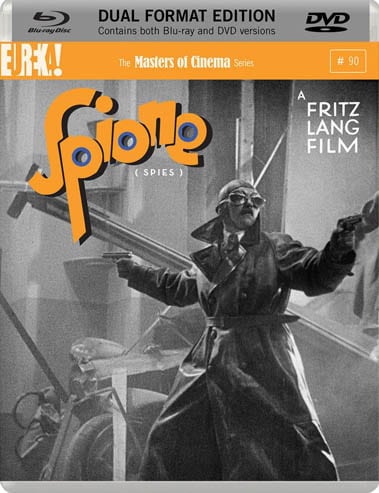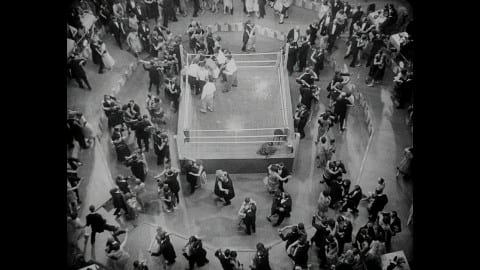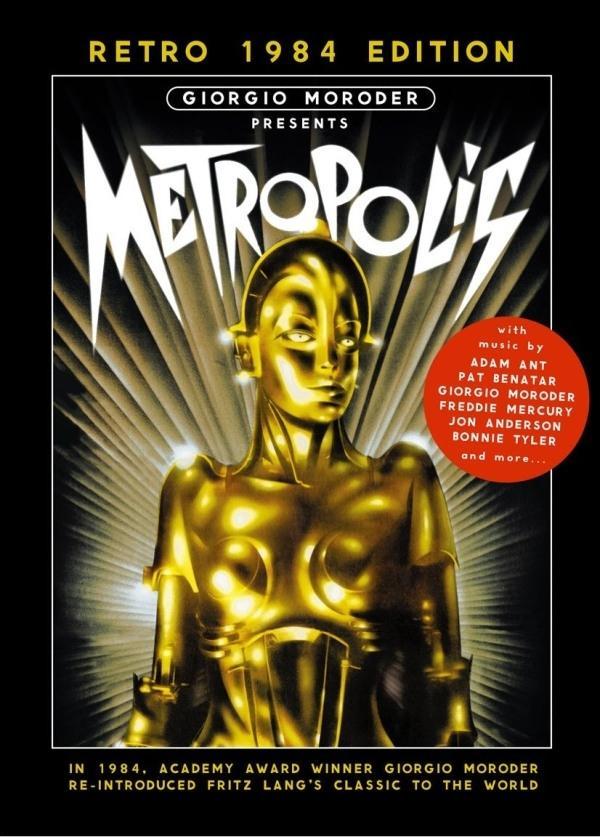Spione (1928)
Directed by: Fritz Lang
Written by: Fritz Lang, Thea Von Harbou
Starring: Gerda Maurus, Lien Dayers, Louis Ralph, Rudolf Klein-Rogge
HCF REWIND NO. 254: SPIONE AKA SPIES [Germany 1928]
ON DUAL FORMAT BLU-RAY AND DVD: 17th November
RUNNING TIME: 145 min
REVIEWED BY: Dr Lenera, Official HCF Critic
A series of murders, kidnappings and thefts of important documents are the work of Haghi, a seemingly respectable bank manager who is actually a criminal mastermind. The latest thing he’s after is a secret Japanese treaty, and he first blackmails opium addict Mrs. Lelane into betraying what her husband knows of the negotiations. Agent No. 326 is instructed to hunt down Haghi, whom nobody has seen, but Haghi has seen through his tramp disguise and sends his beautiful master spy Sonia Baranilkowa, who has just seduced Colonel Jellusic into betraying his country, to worm her way into 326’s confidence…..
This hugely entertaining espionage romp could almost be considered a prototype James Bond film with its tough hero with a number, evil villain in a secret headquarters, pretty heroine serving the villain who falls for the hero, gadgets, chases etc, though it’s worth remembering that spy novels had already been popular way before Fritz Lang made Spione and of course there were all those serials too. Essential viewing if you think of silent films, especially German silent films, of being heavy going and hard to actually enjoy, Spione is just tremendous fun throughout it s not-inconsiderable running time, and is one of Lang’s lightest films- while not at all a comedy, there is a playful sense of fun throughout. I guess you could make claims for it to be commenting on the times like many of Lang’s previous pictures, but to me it just seems like it was intended to be escapism with no real bearing on the real world. Though it doesn’t provide much of the way of actual action until the final quarter, the swift pacing, intriguing and event-filled plot and Lang’s magnificent story-telling techniques [which are so good the film needs few inter-titles] make for riveting viewing. You know a movie is doing a good job when you check what the time is and are surprised that a whole hour has passed instead of the half hour or so it seemed like.
Spione seems partly to be a re-working of his earlier two-part thriller Dr. Mabuse, The Gambler, with its star Rudolph Klein-Rogge playing a similar role and many other similarities, though there are many echoes of other early Lang movies. Lang’s previous film Metropolis, reviewed elsewhere on this website, is an amazing, astounding motion picture, but its budget had spiralled out of control and even if hordes of people had flocked to see it there would have been little chance of it recouping its production costs. Universum Film AG insisted that Lang’s next film would be more popularist and relatively low budget with no large sets, the director having to use more close-ups than normal, though in no way does the resulting film feel cramped. Based on a novel by Lang’s then-wife Thea von Harbour [though Lang actually had an affair with star Gerda Maurus, who had been married to Klein-Rogge!], Spione was the box office success expected, though the US and many other countries saw a version running 90 min, with a third of its running time shaved off. Eureka Entertainment of course present the full restored-in-Germany 145 min version [the IMDB has it at 170 min, but that’s from a version playing at the wrong speed].
Set in the present day though with a few odd details like lots of leather outfits[!], Spione opens up at a rattling pace, beginning with a close-up of a safe being broken into, then following it with images of thefts and killings in a brilliantly constructed montage designed for maximum impact. Small wonder that the Secret Service is publically ridiculed. Our hero is first seen being dragged off the streets in the get-up of a tramp before unmasking a mole who took his picture right in-front of his boss. The mole was working for Haghi, who’s behind all the crimes. Deliberately, I think, looking like Lenin, Haghi might be wheelchair-bound but seems to have tentacles spreading everywhere. He’s especially effective at using seductive female aides to get information out of rich men, though it’s not at all clear what Haghi is trying to do with all this dastardly stuff he’s perpetuating. I’m guessing it’s world domination. The whole thing about the important, behind-closed-doors Japanese treaty is extremely vague too, and some of the details which we do have don’t make much sense, but it’s good to know that MacGuffins [the unimportant thing that propels the story] were in evidence way before Alfred Hitchcock came up with the actual term.
Spione’s narrative is easy to follow, and even though it has several other small strands revolving around this silly treaty, such as the seduction of a very reserved Japanese agent, Akira Matsumoto, the larger part of the story concerns 326 and his romance with Sonya Baranilkowa, who unbeknownst to 326 is in the employment of Haghi. Though it’s not often mentioned of this director, Lang was quite a romantic, and he proves it several times in Spione, such as the first meeting of the lovers which is interspersed with close-ups of hands or other objects so we can feel both the awkwardness and the growing emotional intensity, or a lovely indication of the two having spent a whole afternoon in each other’s company employing a very succinct ‘passing of time’ montage that opens and closes with them holding hands. Even this section of the film is hardly slow, but things accelerate soon after and it all turns into cliff-hanger stuff with vehicle chases, fights, nerve gas and a train crash. Lang films this stuff really stylishly and excitingly considering the time Spione was made, such as the train crash which is achieved simply but extremely effectively with editing, smoke and light effects, or action going on in two rooms next to each other shown simultaneously by having the camera in one room but us being able to see the shadows of the people fighting next door. Then again, this film is full of innovative touches, such as imposing the number of a train on images of the moving train, while showing an image of what somebody is thinking really was quite original for the time and the way Lang does it is still very interesting. Some of his devices work, some don’t, but Spione really does put paid to the idea that silent films are visually static and uninteresting.
There’s an almost fetishistic love of gadgets that would make ‘Q’ very proud [though I think he wouldn’t have even given Roger Moore exploding coconuts], and one rather surreal scene where we visit a boxing match and, as the camera watches from above, the match finishes and the ring is surrounded by couples dancing, the place now a night-club! I found so much to enjoy in Spione that it was easy to forgive certain flaws, such as some gaping holes in logic that even I found hard to swallow, or a few performances which really overdo the ‘broad’ aspect [even allowing for the fact that this is a silent film] such as Gerda Maurus’ Sonja going into passionate raptures over the picture she holds of her love. And then there’s the film’s odd, yet rather touching ending, which I won’t ruin for you by describing, but see if you agree with me in that, in a way, Rudolph Klein-Rogge’s barnstorming final scene can be seen as a farewell to silent cinema [Spione was nowhere near the final silent film, but they were on their way out] it before the talkies took over, a unique art form’s final curtain call. Probably Lang, who continued as a first-rate filmmaker throughout the next few decades, knew the way things were going.
The stand-out performance is really by Klein-Rogge, who for much of the time is just allowed to simmer nicely and is all the more effective for doing so. Eureka Entertainment’s version of Spione has a decent music score, which occasionally also supplies sound effects in a deliberately dated fashion, by Donald Sosin. Largely piano and synth-led, the music matches the images well for most of the time. When Friedrich-Wilhelm-Murnau-Stiftung went to restore Spione in 2003, they sadly found that no original negative existed for the film and had to rely on a nitrate copy with bits and pieces from lesser prints to make up the full-length film. There are unsurprisinglya few very damaged-looking shots but overall the picture quality of Eureka Entertainment’s release is amazingly good, very sharp and clear. This was the first time I’d seen Spione and, though it perhaps lacks the resonance of its director’s very best work, it’s certainly a film I’d rank very high up there in terms of pure entertainment.
Special Features:
• New high-definition 1080p presentation of the film on the Blu-ray
• Original German intertitles with optional English subtitles
• 69 minute documentary about the film
• 40-PAGE BOOKLET including new and exclusive writing by critic Murielle Joudet and an essay by Jonathan Rosenbaum











Be the first to comment